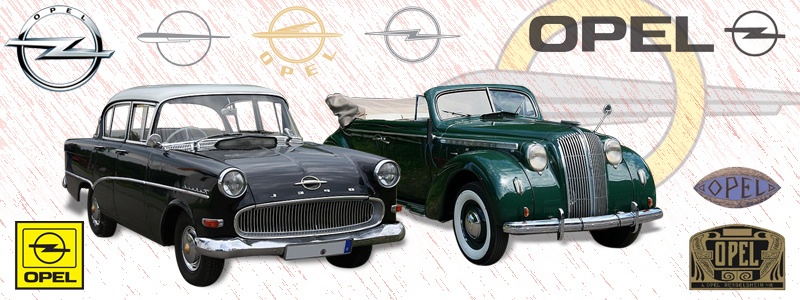Opel has its origins in the sewing machine business, where in 1886, and encouraged by his five sons, Adam Opel diversified into cycle production. Adam Opel died in 1895, at a time when the cycle car industry was already suffering a downturn, so his widow Sophie and elder sons Carl and Wilhelm looked around for something else to manufacture. Motor vehicles were the obvious answer, and the Opels purchased the rights to the Lutzmann car, a small 4 hp 2.98 kW single cylinder machine. The Lutzmann was hardly a success, and the venture was abandoned after only a few had been sold. The Opels then turned to Darracq, and secured the sole agents rights for Germany, Austria and Hungary.
The new venture required Opel to manufacture the Darracqs under licence, and by 1902 the company launched its own 10/12 115ci 1.9 litre model. Twin cylinder "doctors cars" in 6/12 or 8/14 form followed, as well as a large 421.1ci 6.9 litre 35/40. Over the next 8 years Opel established itself as a well-established vehicle manufacturer. But just as things were looking great, a serious fire at their factory destroyed their entire plant and equipment. Carl and Wilhelm made the brave decision to do away with sewing machine manufacture, and instead re-build to concentrate exclusively on motor car manufacture. The first iterations were small twin cylinder cars (now 5/12 and 6/16) and the flagship 40/100, now with a 622.4ci 10.2 litre engine.
The company struggled after World War 1, and with raw materials being hard to obtain and the Russelsheim factory being in French occupied territory the outlook was bleak. Post war demand for cars in Germany was nearly non-existant, however miraculously the company survived, at first manufacturing pre-war designs, then in 1924 manufacturing the 4/12 Laubfrosh (tree frog) which was a copy of the Citroen 5CV. It was this car that went a long way to helping Opel not only survive, but thrive, so much so that it drew the attention of US heavy weight GM.
In 1929 GM purchased 80% of the company, and two years later they purchased the remainder. Under GM's direction, the company then concentrated on the manufacture of smaller cars, such as the
unitary-construction 78.05 ci 1.3 litre Olympia of 1935, and the 65.54ci 1.07 litre Kadett of 1937. The company did have larger cars on offer to, such as the six cylinder Admiral built between 1937 and 1939. Opel was nationalized by the Nazi regime in 1940, and manufactured trucks and engines during World War 2. The company re-started vehicle manufacture in 1947 with the pre-war Olympia design. GM again resumed control in 1948, but it would not be until the early 1950's that genuinely new cars rolled off the production line. The first of note was the Rekord in 1953, and a new 61.02ci 1-litre Kadett in
1962.
Opel's reputation grew over subsequent years, as their cars were both well made and offered above average handling. Best of these were the Ascona and Manta, and these were both given
front wheel drive in the 1980's, as was the Kadett and Corsa. From the 1980's onward Opel increasingly shared parts and styling with the British GM subsidiary
Vauxhall.
Also see: The History of Opel |
1966 to 1969 Opel Color Codes



